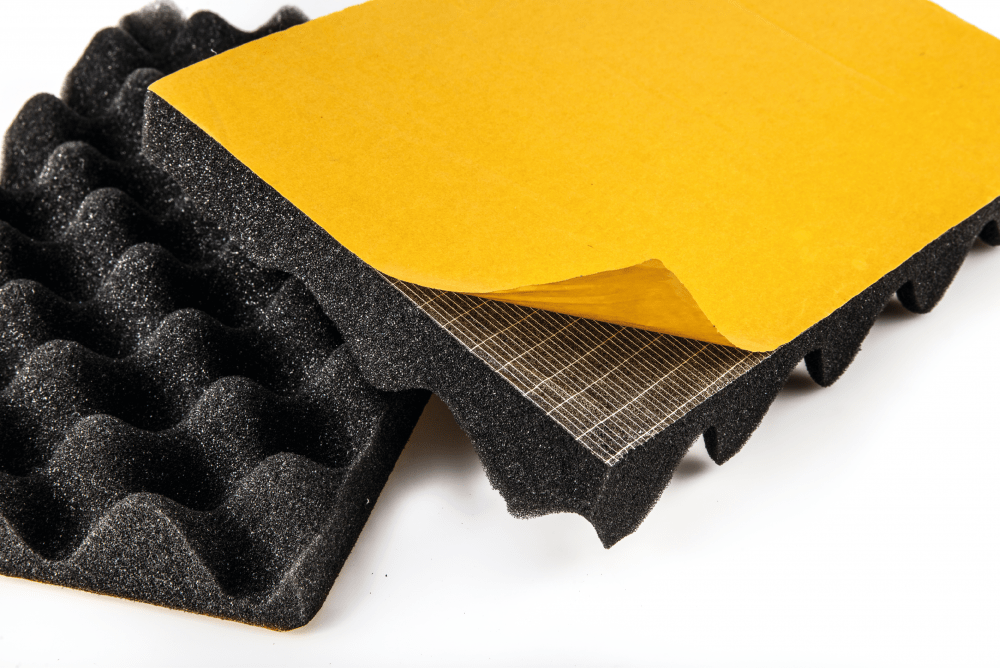Choosing The Right Acoustic Foam For Your Home

Choosing the right acoustic foam for your home can be a daunting task. With so many types and options available, it can be hard to know which one is the best for your needs. In this article, we will break down the different types of Acoustic Foam and help you choose the best option for your home.
What is acoustic foam?
Acoustic foam is a type of insulation that is made from compressed air and polyurethane. It is used to reduce noise and vibration in buildings, homes, and other structures. Acoustic foam can be used in place of traditional insulation materials such as fiberglass, cellulose, or mineral wool.
There are several types of acoustic foam:
Greenfield acoustic foam is the most common type of acoustic foam and it is used to reduce sound transmission through walls, ceilings, and floors.
Reduced-density acoustic foam (RDAF) is a type of acoustic foam that has a lower density than greenfield acoustic foam. RDAF is usually used to reduce sound transmission through walls and ceilings.
High-density acoustic foam (HDAF) is the most expensive type of acoustic foam and it is used to reduce sound transmission through walls, ceilings, and floors. HDAF has a higher density than RDAF and it also has better soundproofing properties.
Types of acoustic foam
There are a variety of acoustic foam types available on the market, so it can be hard to decide which one is best for your home. Here are some of the most popular types:
One-Piece Acoustic Foam: This type of acoustic foam is made from a single piece of material that is shaped into a cylinder or rectangle. It’s usually less expensive than other types of acoustic foam, but it may not be as durable.
Two-Piece Acoustic Foam: This type of acoustic foam is made from two pieces of material that are shaped into a cylinder or rectangle. It’s usually more expensive than one-piece acoustic foam, but it may be more durable.
Triangular Acoustic Foam: This type of acoustic foam is made from three triangular pieces of material that are shaped into a triangle. It’s usually more expensive than two-piece and one-piece acoustic foam, but it may be more durable.
Pros and Cons of acoustic foam
There are many pros and cons to acoustic foam, so it’s important to decide what is important to you before making a purchase.
Pros:
-Soundproofing: Acoustic foam can effectively block sound, making it a great choice for bedrooms or other areas where noise is a concern.
-Fire Safety: Acoustic foam can also be used in place of regular insulation in places like attics and basements, preventing fires from spreading.
-Eco-Friendly: Compared to other types of insulation, acoustic foam is relatively eco-friendly due to its recyclable materials.
Cons:
-Price: Acoustic foam can be expensive, depending on the type and size of the room.
-Installation: Acoustic foam requires some installation work, which may require professional help.
How is acoustic foam used in homes?
In buildings, acoustic foam is used for a variety of applications such as soundproofing and noise control. In homes, acoustic foam is most commonly used to reduce sound transmission through walls and floors.
What are melamine foam panels?
Melamine Foam panels are a popular acoustic insulation material because they are lightweight, easy to install, and have a low sound transmission rate. They are also fire-resistant, making them a good choice for locations that may be exposed to fire. Melamine foam panels come in different densities and can be cut to any size or shape.
What are the benefits of melamine foam panels?
There are many benefits to using acoustic foam panels in your home. Acoustic foam panels are a great way to reduce sound transfer and noise levels in your home. This is important if you have children or pets, as they can often be loud when they move around. Additionally, acoustic foam panels can help to insulate your home, reducing the amount of heat that escapes. Finally, acoustic foam panels can also improve the appearance of your home by reducing noise and sound reflections.
Conclusion
When it comes to acoustic foam, the right material is essential for creating a soundproof and noise-free home. Choosing the wrong acoustic foam can lead to loud noises being emitted from your home, making it difficult to enjoy peace and quiet. To help you choose the right acoustic foam for your needs, we have outlined some of the key features to consider when purchasing this type of product. Thanks for reading!
